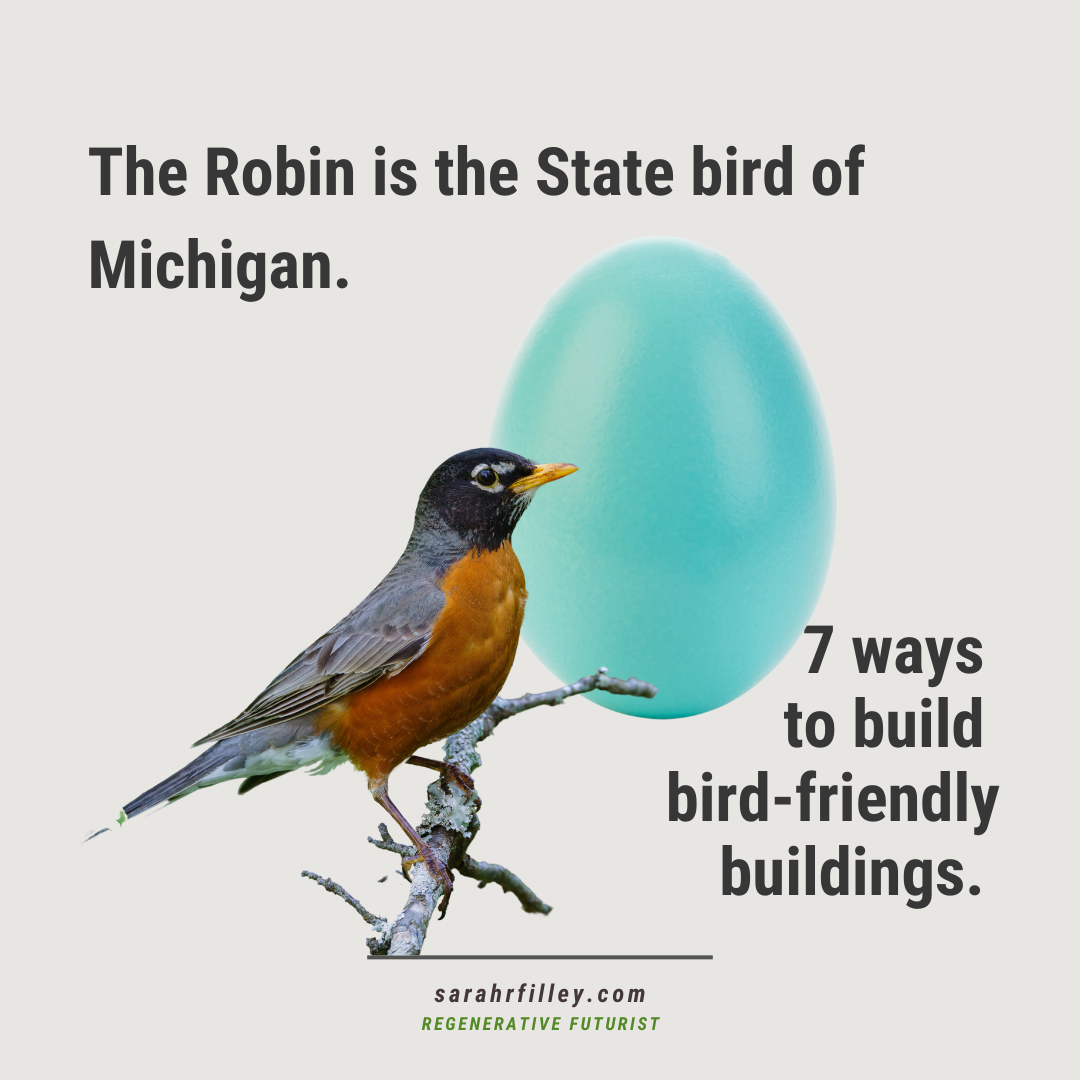AuthorHi, I lift up resources and insights for dreaming into a regenerative future. Here I share inclusive, equitable, and strategic solutions for climate action, urban development, and climate action plans. Archives
June 2024
Categories |
Back to Blog
For the birds: Part 11/23/2024 PART 1: For the birds.
The vision for a regenerative future includes increasing biodiversity. 60-90% of some of our bird and insect populations have declined since 1970. There are many detrimental impacts on our bird populations. This one might surprise you: Up to 1 Billion birds are estimated to die each year after hitting windows in the U.S and Canada. By day, birds perceive reflections in glass as habitat they can fly through. At night, migratory birds are drawn by city lights and can collide with buildings. Here are 7 ways to help our feathered friends from The Cornell Lab of Ornithology. I found this excellent resource during research for an upcoming project all about owls. Stay tuned... 1. Make Windows Safer - Install window screens, or break up reflections on windows using film, vinyl, stickers, paint, or string spaced in a grid no more than 2" apart vertically and 4" horizontally . 2. Reduce Lawn, Plant Natives - With more than 63,000 square miles of lawn in the U.S. alone, there’s huge potential to support wildlife by replacing lawns with native plantings. Transforming 35% of the site or lawn with Native plants will attract birds by increasing habitat, providing shelter, and nesting areas for birds. The nectar, seeds, berries, and insects sustain hungry birds and other wildlife. 3. Avoid Pesticides - More than 1 Billion pounds of pesticides are used in the U.S. each year. Common weed killers used on landscaping can be toxic to wildlife. Birds are harmed by pesticides through direct contact, or by eating contaminated seeds or prey. Pesticides also reduce the number of insects that birds need to survive and raise their young. Design alternative methods of weed suppression and maintenance. 4. Protect Our Planet from Plastic - About 4,900 million metric tons of plastic have accumulated worldwide, harming wild- life including seabirds that mistakenly eat plastic, or become entangled in it. At least 80 seabird species ingest plastic, mistaking it for food. By 2050, scientists estimate that 99% of seabird species will have eaten plastic. Avoid single-use plastics in your projects and sites, especially for sites close to the shorelines. Examine your supply chain for opportunities to reduce plastic, including drinking water during the construction phase. These are a few ways to hold urban developers accountable to you climate action and ecological plans, especially along critical migration paths along watersheds.
0 Comments
Read More
Leave a Reply. |
 RSS Feed
RSS Feed
